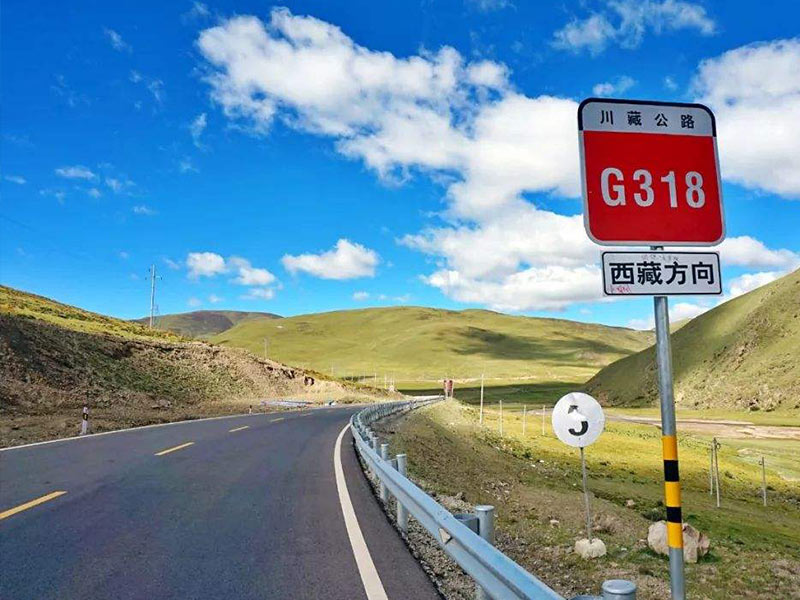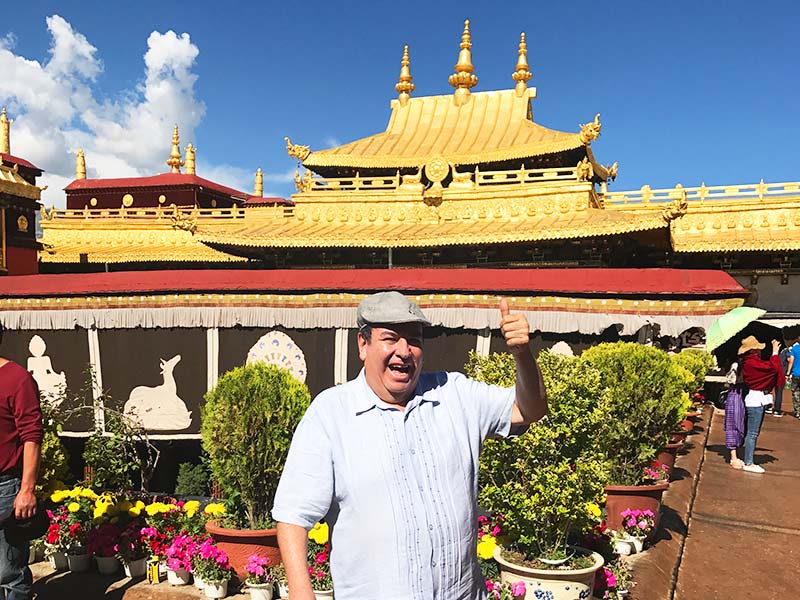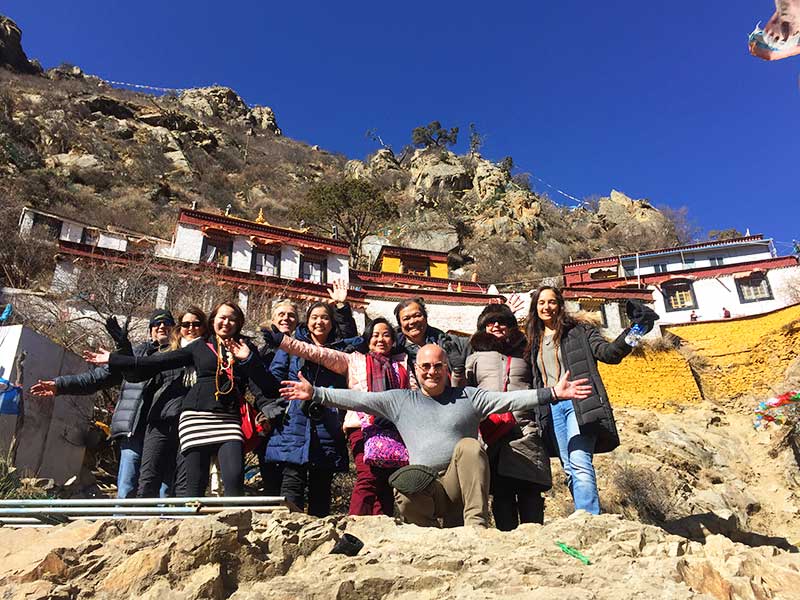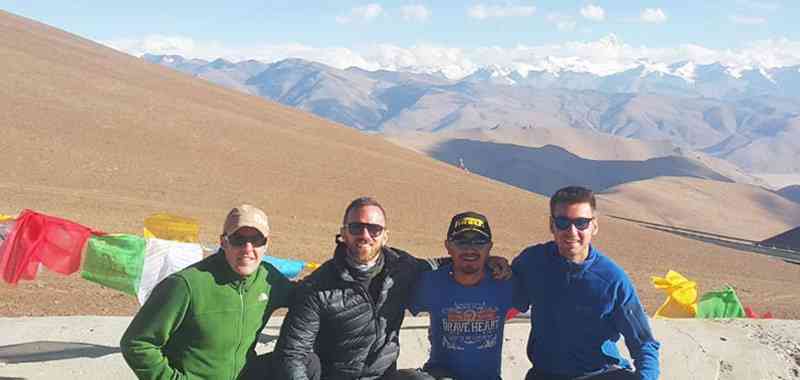Tibet, the sacred snow land on Earth, is one of the top destinations for photographers all over the world. The snow-capped mountains, the crystal blue lakes, the endless yak-filled grassland, the pure blue sky… the natural beauty of Tibet plateau offers great photos. Moreover, the culture of Tibet is also an attraction for photographers. The devout praying pilgrims, the fluttering praying flags, the innocent Lamas… all you experienced in Tibet is worth to be recorded by your camera.
In order to help you make a better arrangement for your lifetime trip in Tibet, here we offer the ultimate guide on how to plan a photography tour in Tibet.
Travel Documents You Need
For all foreign travelers visiting Tibet, Tibet Travel Permit is the most important travel document. Without it, you cannot even board the train or flight to Tibet.
If you plan to start your Tibet photography tour from mainland China, you need to apply for Tibet Travel Permit to enter Tibet. If you want to enter Tibet from Nepal, you need to apply for Group Tourist Visa through the Chinese Embassy in Kathmandu, as well as your Tibet Travel Permit.
To visit the regions outside Lhasa city, such as the Everest Base Camp or Mount Kailash area, you need to apply for extra travel documents, such as the Aliens’ Travel Permit or Military Permit.
It seems like a confusing case to apply for serious travel documents for your photography tour in Tibet. Why not join in our group tour to Tibet? We will handle all the massive things and apply for all the required travel documents on your behalf, tailor your own itinerary to see all that you want to see and arrange the comfortable accommodation, transportation and local guide and drivers for you. All you need to do is just tell us your interests, and let us handle the rest.
Camera Gears to Prepare
1. If you are keen on humanistic photography, Canon/Nikon EF35mm f1.4mm is enough.
2. If you mainly shoot the vast grassland or endless mountain ranges, it is suggested to use the telephoto lens (70-200mm, f2.8), which can better help you capture the subject you want.
3. If you are interested in the monasteries, the valleys, and the streets, it is suggested to use the wide-angle lens (16-35mm; 14-24mm).
4. No matter what lens you use, you need to buy a good UV lens, because there is too much ultraviolet light in Tibet. If you don’t use UV mirror, the color contrast may be smaller. It is not necessary to use CPL (Circular-Polarizing Filters) for the sky itself is already dark blue in Tibet plateau.
5. It is highly recommended to take a tripod with you. The external flash is not quite necessary for a Tibet photography tour since it is forbidden to use it in most monasteries.
6. It is better to bring some spare batteries and compact flash cards for your camera because there are so many things to record and in some remote area it is hard to charge your camera.
How to Get to Tibet
Getting to Tibet by air is the fastest and most convenient way. The best flight line for the photographer is from Kathmandu to Lhasa, during which you can see the snow-capped mountains of Himalayas from the plane window. Taking the train to Tibet is the most efficient way to enjoy the fascinating landscape of Qinghai-Tibet plateau from Xining to Lhasa. The train will take you through the vast land of the Third Pole on Earth. If you are lucky, you can take photos of the wild animals, such as Tibetan antelope and Tibetan wild donkey, when passing through Hoh Xil, the isolated region in the northwest part of Qinghai-Tibet plateau. Once you enter the Northern Tibetan grassland, the vast green grassland with yaks will show you a lively picture of the Tibetan nomadic tribes.
For photographers, getting to Tibet by overland is the most charming way to deeply explore the marvelous land. The most beautiful highway to Tibet is the Sichuan-Tibet highway. From Chengdu to Lhasa, you will explore the Kham Tibetan culture and the splendid landscape of western Sichuan province, and enjoy the forests, rivers, and lakes in the eastern Tibet till you reach Lhasa, the holy city on the plateau.
Top Things to Photograph in Lhasa and Its Surrounding
Barkhor Kora
Barkhor Street is the local narrow street around the famous Jokhang Temple in the central area of Lhasa city. It is a holy road for local pilgrims to do the kora around the Jokhang. There are many small shops, tea houses, and restaurants on the Barkhor Street, which makes it a good place to take photos of the real life of the local Tibetans.
Potala Palace
Potala Palace is the top attraction in all Tibet tours. It is not only a must-see spot but also a wonderful site for making good photos. From the Potala Palace, you can have a great overview of the Lhasa city. And the best place to take photos of the Potala Palace is the Potala Palace Square in front of it, and the Chakpori Hill (Yaowang Mountain), where you can have the best angle to record the sunrise of the palace.
Jokhang Temple
Every morning, there are many local pilgrims praying in front of the Jokhang Temple, so if you want to shoot the sacred scene, remember to get to the Jokhang Temple in the morning. You can take photos of the outside. And at the roof of the Jokhang Temple, you can see the Potala Palace. If you want to take photos inside the temple halls, you need to pay for a permission. Please remember to ask the staff which halls are available for taking photos inside.
Sera Monk Debate
Humanistic photography is one of the biggest attractions for photographers coming to Tibet. And Sera Monastery is a perfect place to see the unique monk debate. It is a kind of learning process of Gelug university monasteries of Tibet. Monks will debate with special gestures at the Debating Courtyard of Sera Monastery. Travelers can witness the debate at around 3 to 5 P.M. from Monday to Saturday.
Drepung Monastery
Drepung Monastery is another one of the Great Three Gelug monasteries of Tibet. It was built in 1416 and is the biggest monastery in Tibet. The opening ceremony of Shoton Festival in Drepung Monastery is a special event for both normal tourists and photographers to witness the Grand Thangka unfurling. One of the largest embroidered Thangka will be shown on the hillside near Drepung Monastery. Don’t miss the chance to record this grand event by your camera.
Namtso Lake
Lake Namtso is one of the Three Sacred Lakes in Tibet. It is around 240 kilometers away from Lhasa city. On the way to the Lake Namtso, you can see the massive pasture, Tibetan nomads and endless snow-capped Mt. Nyainqentanglha in the northern Tibet. It is highly suggested to stay one night at the lakeside to enjoy the starry night and the first rays of sunshine from the lake.
>> Join-in Most Popular Lhasa Photography Tours
Top Things to Photograph from Lhasa to EBC
Yamdrok Lake
Yamdrok Lake is a famous holy lake in Tibet. Surrounded by snow-capped mountains, the lake reflects the sunshine and blue sky like turquoise in a sunning. And the best place to take a panorama view of Yamdrok Lake is the Gangbala Pass.
Simila Mountain Pass
The prayer flags of five colors are used to praying for peace, strength, and wisdom in Tibetan religions. And on the way from Lhasa to Everest Base Camp, there is one place where you can make great photos of the prayer flags. That is the Simila Mountian Pass. Here you will be shocked by the hundreds of colorful prayer flags flying on the mountain pass.
Gyantse Kumbum Stupa
The Gyantse Kunmbum Stupa is a must-see attraction in the famous Pelkor Monastery in Gyantse City, the third largest city in Tibet after Lhasa and Shigatse. For photographers, it is a good place to enjoy the far view of Gyantse Fortress.
Tashilunpo Monastery
Tashilunpo Monastery, the seat of Panchen Lamas, is the most important and the largest monastery in Shigatse. You can enjoy the peaceful atmosphere in the monastery. Wandering through the narrow alleys surrounded by the red walls, you can take photos of the white halls with golden roofs and the normal life of the local monks who live and study in the monastery. (If you want to take pictures of the assembly room and some of its chapels with an extra fee about 150RMB per room.)
Gawu La Pass
On the way to Mount Everest Base Camp, the Gawu La Pass is the best platform to take photos of the spectacular Himalaya regions, including the summit of Mt.Everest (8844.43m) as well as Makalu (8463m), Lhotse(8516m), and Cho Oyu (8201m) and Shishapangma(8012m). It’s highly recommended.
Rongbuk Monastery
Rongbuk Monastery is 8 kilometers away from Everest Base Camp. The world’s highest altitude monastery is a wonderful place to take photos with the summit of Mount Everest, the top of the world, in the background.
Mt. Everest
What can you do when you face the top of the world? Just record the moment! During your stay in the Everest Base Camp, you can enjoy the amazing sunset and sunrise from the summit. At 5200 meters above the sea level, you can get the closest to the sky, so don’t miss the chance to keep the stunning starry night forever by your camera.
>> Join-in Most Popular Everest Base Camp Photography Tours
Taboos for Photography in Tibet
1. Ask for permission from the Tibetan monks if you want to take photos inside the monasteries. Generally, it is forbidden to take photos inside the halls. In some monasteries, you can pay an extra fee to do so.
2. Whenever you want to take pictures for the local people, especially for the kids and women, please invite them respectfully and politely. It is suggested to give them some tiny presents for thanks.
3. If you meet some avaricious guys asking you for money when you take pictures in public places, please refuse to do so. Or ask your travel guide for help. Don’t argue with them.
.jpg)














0 Comment ON "How to Plan Tibet Tour for Photographers?"